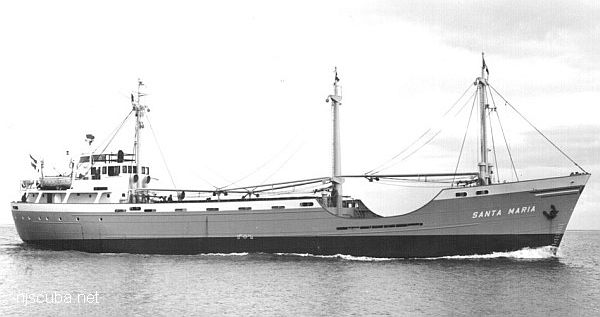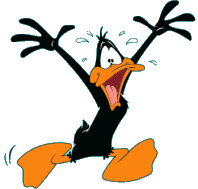Pinta (3/3)


The Dutch freighter Pinta was built in 1959 by N.V. Bodewes shipbuilders, along with her two sister ships, the Nina and the Santa Maria. She measured 194' feet long, with a 31' beam and a draft of nearly 13', and weighed just over 1000 tons deadweight. The ship was powered by an oil engine and a single screw.
Operated by Dammers & van der Heide's Shipping and Trading Company, the Pinta would travel between New York City and Central America, stopping at other east coast US ports to discharge cargo. On May 7, 1963, the ship was en route to New York, nearly empty after discharging most of her cargo of Central American lumber in Norfolk, Virginia. At dusk that evening, the Pinta was cruising off the coast of New Jersey, along with the 10,700-deadweight-ton British freighter City of Perth.
Just before 8:00 PM, the larger ship rammed the Pinta hard just forward of the bridge. The Pinta immediately began taking on water, and she disappeared beneath the waves less than an hour later. Captain Alie Korpelshoek gave the order to abandon ship after the collision, and all twelve crew members escaped in the ship's lifeboat and were picked up by the City of Perth.

The cause of this accident remained a mystery to the American press. The weather was clear, with visibility reported as 15 miles, winds of 17 knots, and three to four-foot seas. As the collision occurred in international waters between two foreign flag vessels, the U.S. Coast Guard did not investigate. The shipping company's lawyer enjoined the Pinta's crew to silence after their rescue as well.
While the sinking of the Pinta was not a major maritime disaster, with no loss of life and only minor injuries to the crew, there was great personal hardship involved. The one woman on the ship's crew, Rita Wollenswinkel-Huveneers, recalls an unpleasant life aboard ship and after the accident.
At the age of 28, she was a newlywed when she and her husband, the ship's Navigating Officer, joined the Pinta's crew. They had difficulty with the rest of the crew, ten jealous men, for the eleven months they were at sea. The young couple had all of their possessions with them, and everything went down with the ship. Although the shipping company was insured and received compensation when the collision was determined to be caused by a malfunction of the steering gear on the City of Perth, the crew received nothing. To add insult to injury, the crew was not allowed to speak to the press at all, not even to correct errors in the news reports about them.
Original NJScuba website by Tracy Baker Wagner 1994-1996




Questions or Inquiries?
Just want to say Hello? Sign the .